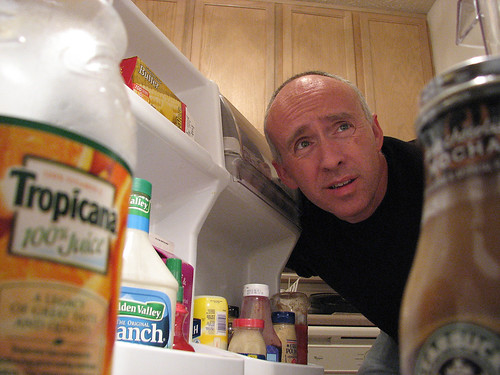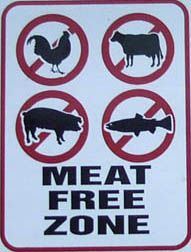
With a Saturday and Sunday lunch buffet, this organic macrobiotic vegan restaurant provides an all you can eat spread that is tasty, good for you, and good for the environment. It is such a relief for vegan-me to be able go to a restaurant and eat anything I want off the menu. No need to prepare beforehand, think about what's in a dish, ask questions about its preparation with the server, or compromise my vegan values. Instead, I can simply select, eat, and enjoy, allowing the beauty and flavors of the foods to nourish my body and spirit.
Did I mention it was an all you can eat buffet? I've begun to make it a Saturday destination, arriving at 11:30 when they open, leaving by 3:00 when they close, eating, studying, reading, and enjoying the food selections all the while. The turnip-carrot-miso soup, burdock-mushroom-carrot saute, leek-beet sauce, and apple corn cake during this last trip were absolutely excellent. I lost count but I think I filled 6, may be 5 plates, 4 soup bowls, and enjoyed 3 servings of dessert. (I did run 8.39 miles before starting my grub fest!)
 When preparing to pay my $15.50 at the front counter, I noticed that there was a serving platter with 2 pieces of chocolate cake. There was a sign on top clearly stating that these $3.95 cake slices were NOT VEGAN.
When preparing to pay my $15.50 at the front counter, I noticed that there was a serving platter with 2 pieces of chocolate cake. There was a sign on top clearly stating that these $3.95 cake slices were NOT VEGAN. A VEGAN restaurant that serves a NON-vegan chocolate cake = I had found a common ally in my vegan exception. I was no longer alone! Without hesitation, I asked for a slice to go.
When trying to place the first piece in the to-go box, the server accidentally dropped a chunk of the cake on the counter. I gasped in horror. She apologized, put the rest of the cake in the box, and then proceeded to place the second slice in a box for me to take. Though full from my luncheon feast, I was anxious to give this piece of cake a try. (There is always room for a sampling of chocolate cake!) And having no shame when it comes to chocolate, I asked if I could try the chunk that had fallen on the counter. It was about an inch in length, off the tip of the fallen cake, and simply called to me. The server said go ahead and try it, so I did.
It was not a bad bite, but I knew I would need time to analyze it, review it, and savor it more thoroughly at home. I was just so delighted that I could be in a vegan restaurant, enjoy a vegan lunch, have a NON-vegan chocolate cake, and eat it too! It was a divine moment. I was no longer alone in choosing chocolate as a vegan exception.
Based on appearance, it is clear that Manzanita's Chocolate Cake is homemade for it lacks that refined quality, that finished look, which one often finds in a restaurant cake made by a professionally trained pastry chef. The cake itself was crumbly and the frosting was uneven and a bit runny. But when it comes to chocolate cake, it's not about the look but the taste. I've sampled my share of cakes that were lovely to behold but lousy on the palate. This cake may have looked home baked, but from my counter-top taste test, I knew it was pretty good, even though it was not a slice of dark chocolate cake, my preference.
While the center of this semisweet cake was soft and moist, the edges however were a bit dry and hard, reflecting uneven cooking. The smooth light brown colored frosting did help soften the edges, and with its kahluha and cognac infusions, it also highlighted the subtle chocolate flavor of the cake. The alcohol in the frosting along with the sprinkling of cocoa on top added a nice depth of character to a fairly ordinary chocolate cake.
Overall assessment: 3 cacao beans (out of 5) for the cake. 5 out of 5 for the restaurant as it is the perfect place for vegan-me and cacao-me to unite. And besides, they have an excellent weekend buffet. Though the cake was average, the frosting did bump up its overall taste quality creating a nice non-vegan cake at this vegan restaurant. Though I would love Manzanita to eventually serve a vegan chocolate cake, until they do, I am glad that they like me have made chocolate their vegan exception.
(review date: 2009_11-21)



















